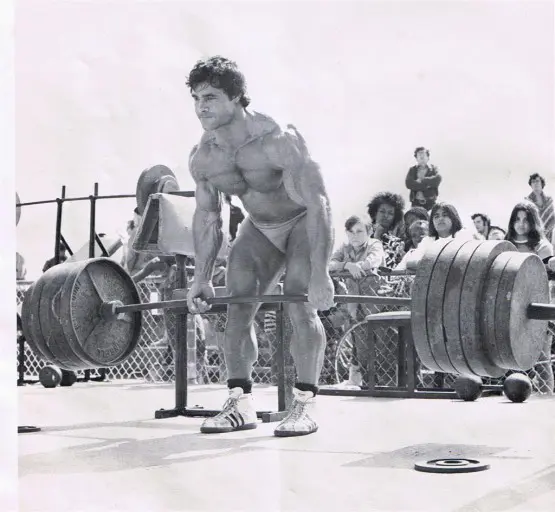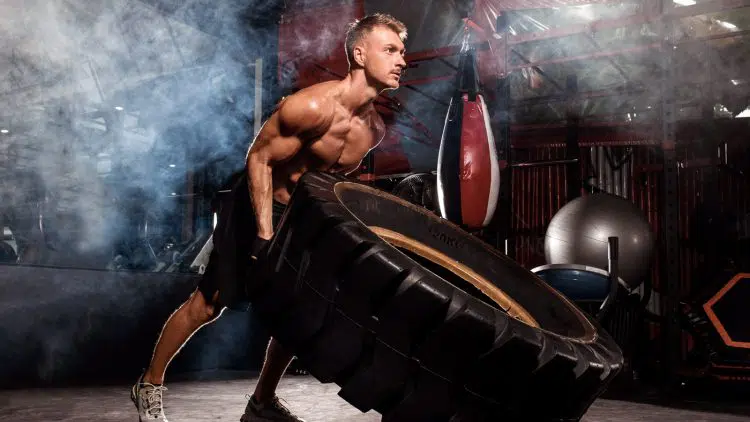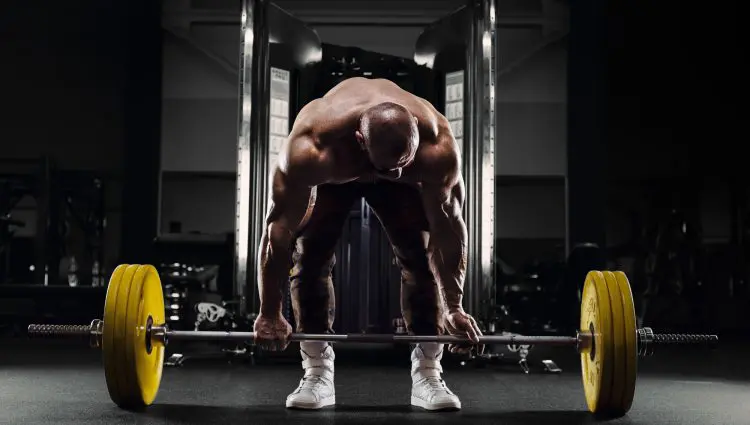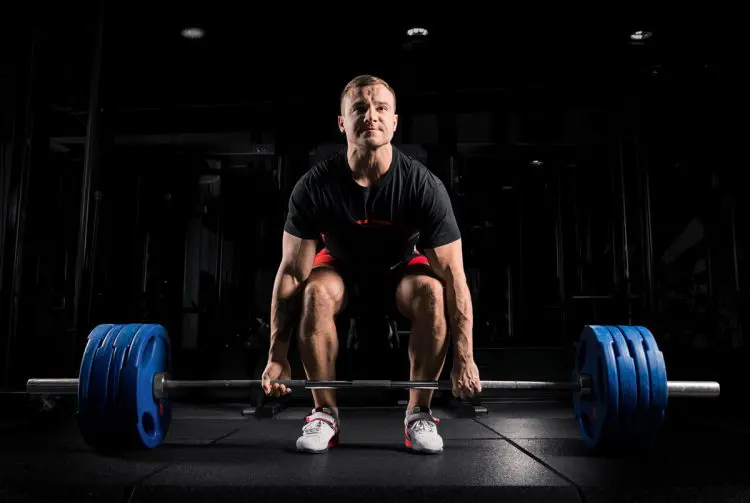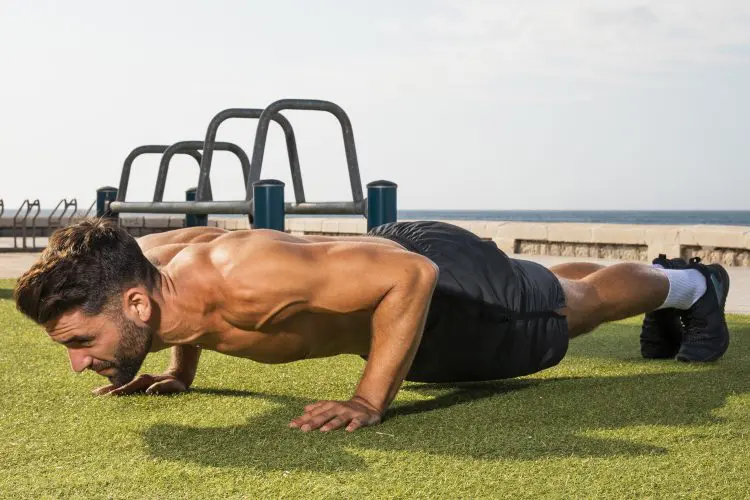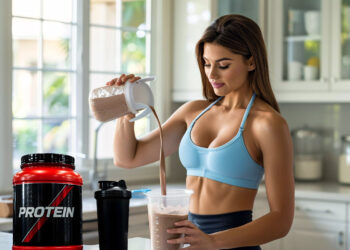The deadlift is an incredibly powerful exercise. It builds real-world strength and is also one of the best posterior chain developers around. If you want to look strong and be strong, the deadlift deserves to be part of your workouts. A BIG part!
However, the deadlift could also help you reach your body composition and weight loss goals.
In this article, we reveal why and how to use the mighty deadlift to lose weight and keep it off.
The Benefits of Deadlifts for Weight Loss
When it comes to weight loss, most people tend to gravitate toward cardio. That makes a lot of sense, given that things like running, cycling, and rowing are renowned calorie and fat burners.
However, strength training exercises are helpful for weight loss too, and the deadlift is one of the best. The six main weight-loss benefits of deadlifts are:
Level Up Your Fitness: Join our 💪 strong community in Fitness Volt Newsletter. Get daily inspiration, expert-backed workouts, nutrition tips, the latest in strength sports, and the support you need to reach your goals. Subscribe for free!
1. Deadlifts burn a lot of calories
Deadlifts are a compound exercise. That means they involve lots of muscles and several joints working together.
Doing deadlifts works your:
- Gastrocnemius and soleus – calf muscles
- Hamstrings – rear of the thigh
- Quadriceps – front of the thigh
- Gluteus maximus – bottom/butt muscles
- Erector spinae – muscles on either side of your spine
- Core muscles – deep muscles surrounding your internal organs
- Rhomboids and trapezius – muscles of the upper back
- Latissimus dorsi – side upper back muscles
- Deltoids – muscles of the shoulder
- Biceps and triceps – front and back of the upper arm
- Forearm flexors – gripping muscles
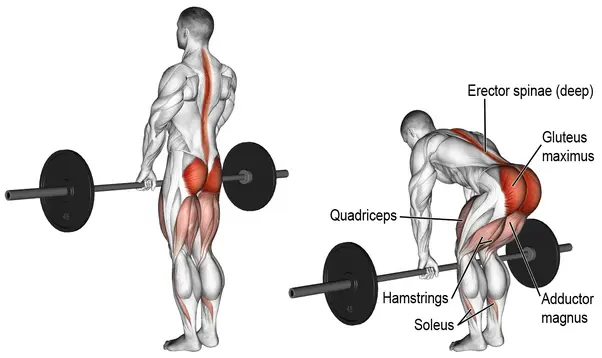
It’s safe to say that the deadlift is pretty much a full-body exercise. Using all these muscles simultaneously requires a lot of energy, and we measure energy expenditure using units called calories.
While your actual calorie expenditure will depend on how hard and how long you work out, your age, weight, and gender, deadlifts are definitely an excellent exercise for burning calories.
Related: How to Burn Fat with Strength Training
2. Preservation of muscle mass and metabolic rate
Losing weight invariably means eating less. While this will force your body to use more fat for fuel, most people also lose muscle mass during a diet. Losing muscle mass will cause your metabolic rate to decrease, leading to slower weight loss and even a progress plateau.
Your body operates on the principle of “use it or lose it”, and if you stress your muscles, your body is more likely to retain muscle mass.
By working virtually every muscle in your body, deadlifts tell your body, “Hey – I need these muscles!” so they are less likely to be catabolized or broken down. More muscle mass means a faster metabolic rate, which should help you lose weight faster (1).
Also, maintaining your muscle mass with deadlifts could stop you from becoming skinny-fat, which is where you look slim but are actually soft and weak.
3. Increased insulin sensitivity
When you eat, your body produces insulin. Insulin is a hormone made in your pancreas which transports nutrients into your liver and muscle cells. Unfortunately, a lot of people are insulin resistant, which means the nutrients that should be taken into your liver and muscles end up going to your fat stores instead.
Intense strength training exercises like deadlifts increase insulin sensitivity, so this critical storage hormone can do its job better. Increased insulin sensitivity also helps lower and stabilize your blood glucose, creating the ideal environment for fat burning and weight loss (2).
Because deadlifts work so many muscles at once, they are among the best exercises for increasing insulin sensitivity.
4. Increased anabolic and fat burning hormone production
Resistance training exercises like deadlifts trigger a significant increase in the production of several important hormones, including testosterone and human growth hormone (3). Testosterone and human growth hormone are anabolic substances, which means they increase protein synthesis and muscle growth.
However, these two substances are also potent fat burners that can help you lose weight.
Most people lose muscle mass as they age, and that leads to weight gain. It’s no coincidence that levels of testosterone and human growth hormone decline at the same time. Optimizing anabolic production with deadlifts will help your body burn fat faster, leading to more weight loss.
5. Increases in post-exercise calorie expenditure
Deadlifts don’t just burn calories while you are doing them; they also speed up your metabolism for hours after you’ve finished training, increasing your daily calorie expenditure. This is called EPOC, which is short for excess post-exercise oxygen consumption and is also known as the afterburn effect (4).
In simple terms, deadlifts are such a strenuous exercise that they rev up your metabolism as you are doing them, and it takes many hours for it to return to normal. During this time, your body burns calories at an accelerated rate, which should help you lose weight faster.
6. A form of HIIT
High-intensity interval training, or HIIT for short, is an intense form of cardio recognized for its ability to burn a lot of calories and trigger weight loss. In studies, HIIT has been shown to burn 25-50% more calories than other types of exercise (5).
For HIIT, most people turn to things like jump rope, sprinting, and other traditional cardio exercises. However, a high rep set of deadlifts will also increase your heart and breathing rate like those cardio activities, which means you can use deadlifts as HIIT. With deadlifts in your workouts, you may not need to do traditional cardio exercises to lose weight.
Also read: Build Strength and Size with the 15 Best Deadlift Variations.
How to Deadlift Correctly
While deadlifts can help you get stronger, build muscle, and lose weight, they are not an exercise to be taken lightly (pun intended!). While they’re a safe exercise when done correctly, using poor technique or too much weight too soon could cause serious injury.
Maximize your results while minimizing the risk following this step-by-step guide to deadlifting:
Level Up Your Fitness: Join our 💪 strong community in Fitness Volt Newsletter. Get daily inspiration, expert-backed workouts, nutrition tips, the latest in strength sports, and the support you need to reach your goals. Subscribe for free!
Step 1 – Set your barbell up so that it’s about nine inches above the floor. If you’re using standard-sized bumper plates, the bar should already be at the correct height. If it isn’t, use whatever means necessary to achieve the right level.
Step 2 – Stand in the middle of the bar. Position your feet so that they are around hip-width apart. Keep your feet parallel or, if preferred, turn them very slightly outward. The bar should be directly over the middle of your feet and around two inches from your shins.
Step 3 – Lean forward and grasp the bar with a shoulder-width overhand grip, with your palms facing your legs. Wrap your hands tightly around your bar and put your thumb on top of your first two fingers to reinforce your grip and prevent slippage.
Step 4 – With straight arms, lift your chest, arch your lower back, and pull your shoulders down and back. Your hips should be below shoulder height. Angle your head so that you are looking at the floor around three meters (10 feet) in front of you.
Step 5 – Take a big lung full of air, brace your abs, and get ready for blast-off. Take the slack out of the bar so that your entire body feels coiled like a spring, ready to explode.
Step 6 – Without bending your arms, press your feet into the floor and extend your knees and hips simultaneously. As you break the bar away from the floor, drive your hips forwards, continue extending your knees and stand up.
DO NOT let your hips rise faster than your shoulders. This increases the distance between the weight and your base of support and puts more stress on your lower back than necessary. Your shoulders (and therefore the bar) should rise at the same speed as your hips.
At the top of the movement, make sure your knees are locked out and your hips are extended. Do NOT lean back. Pause for a second and admire the view!
Now it’s time to put the bar back down. Lowering the weight is easier as gravity is now your friend. However, you must put the weight down with good technique to minimize your risk of injury.
Step 7 – With your arms still straight, chest lifted, and shoulders pulled down and back, push your hips backward and then bend your knees. Moving your hips first means that the bar will miss your knees as you lower it to the ground.
Step 8 – Lower the bar down the front of your legs. Control your descent, but there is no need to go super-slow. However, don’t drop it either. When the bar touches the floor, allow it to settle so you can reset your grip and back position before doing another rep.
Tip: Deadlift Form 101: How to Lift More Weight Safely.
No barbell? No problem! You can also do deadlifts with dumbbells, a sandbag, kettlebells, and even a medicine or slam ball.
Deadlifting for Weight Loss
While simply adding deadlifts to your workouts could help you lose weight, you’ll get better results if you follow a more structured approach. Here are three deadlift-based workouts designed to help you lose weight.
1. Deadlift ladders
This is a self-regulating workout which means you can adapt it to your current level of fitness. As before, load up your barbell with about 70% of your 1RM.
- Do one rep
- Rest 60 seconds
- Do two reps
- Rest 60 seconds
- Do three reps
- Rest 60 seconds
- Do four reps, etc.
Continue adding one rep per set until you are unable to continue. Rest a minute and then start back at one rep. Repeat the entire sequence three times in total. Don’t worry if you can’t reach the same number of reps each time – that’s entirely normal. Just do your best!
2. EMOM deadlift workout
EMOM stands for every minute on the minute. With this training method, you begin your set at the top of each minute and whatever time is left until the start of the next minute is your rest period. So, if your set takes you 35 seconds, you get 25 seconds rest before you go again.
To do this workout, load up the bar with about 70% of your 1RM, or a weight you can lift 8-10 times. Use this online calculator to estimate your 1RM.
Then, on the minute every minute, do five reps. Continue for 10, 15, or 20 minutes. Stop your workout if you are unable to do your reps with perfect form.
Try these 10 Best EMOM Workouts to Burn Fat and Get Fit.
3. Deadlifts and push-ups
The one muscle group that deadlifts don’t really work is your chest. This workout fixes that oversight and also burns a whole lot of calories. Simply alternate between these two exercises until you have done ten sets/100 reps of each. Rest if and when you need to but try and complete the workout as fast as you can.
- 10 deadlifts @ 60% of your 1RM
- 10 push-ups
Wrapping Up
When it comes to weight loss, many people overlook the benefits of strength training and, instead, try and sweat off their unwanted pounds with hour after hour of cardio. While cardio DOES burn calories, it can also lead to muscle loss, and cardio workouts are often lengthy and boring.
Strength training exercises like deadlifts can be every bit as effective for weight loss and come with fewer disadvantages and drawbacks. They aren’t the obvious weight loss choice, yet studies show that they work as well and even better than cardio.
Use the deadlift and our tried and tested workouts to lose weight and keep it off!
References:
1. PubMed: Effect of resistance training on resting metabolic rate and its estimation by a dual-energy X-ray absorptiometry metabolic map https://pubmed.ncbi.nlm.nih.gov/25293431/
2. PubMed: Exercise training and insulin resistance: A current review https://www.ncbi.nlm.nih.gov/pmc/articles/PMC4625541/
3. PubMed: Effects of progressive resistance training on growth hormone and testosterone levels in young and elderly subjects https://pubmed.ncbi.nlm.nih.gov/2796409/
4. Journal of Strength and Conditioning Research: Effect of resistance training on excess post-exercise oxygen consumption https://journals.lww.com/nsca-jscr/abstract/1992/05000/effect_of_resistance_training_on_excess.2.aspx
5. Journal of Strength and Conditioning Research: Caloric expenditure of aerobic, resistance, or combined high-intensity interval training using a hydraulic resistance system in healthy men https://journals.lww.com/nsca-jscr/fulltext/2015/03000/Caloric_Expenditure_of_Aerobic,_Resistance,_or.28.aspx

